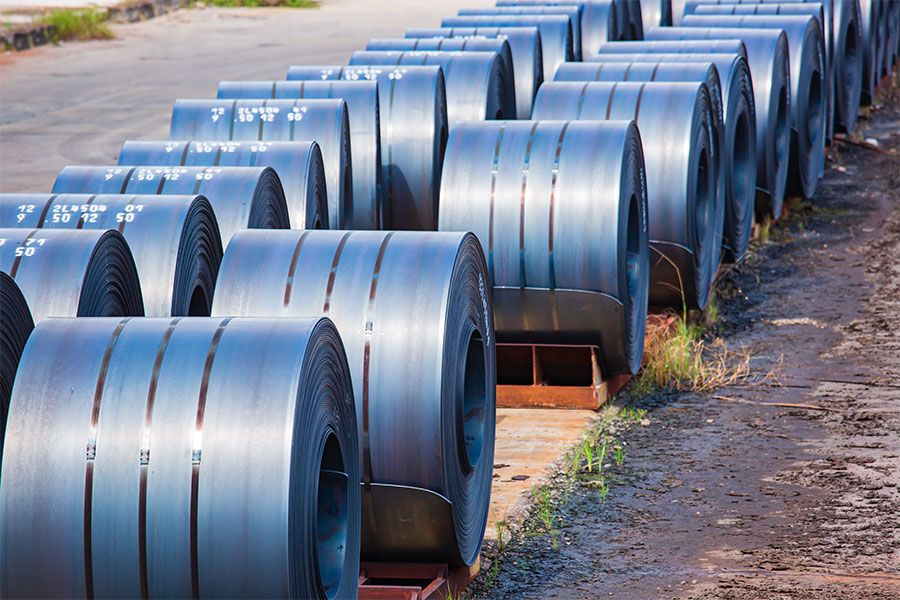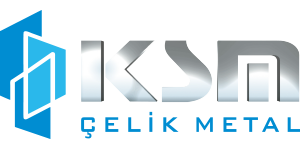

History of Steel
It starts with a journey that extends from the first periods when humanity felt the need for production. According to the information obtained, the production of iron started in Anatolia and presumably in the north of the Caucasus. The history of steel emerged in the last stages of this journey, when more robust and stronger materials had to be produced.
HOW IS IRON AND STEEL PRODUCED?
Although the question of how to produce steel was an important experience that only masters knew in the past, today it is produced under modern conditions. Non-oxide shoots are roasted and find their oxide state. Subsequently, iron is formed by melting. Download process; It is the process of removing the oxygen of an oxide to form a metal. The reduction work is done with coke iron in blast furnaces. A medium-sized blast furnace can process an average of 2000 tons of iron ore per day.
The development of iron production can be traced to the different furnace systems that have been used to smelt the ore through the ages. The order of the quarries extending from the past to the present; blacksmith furnaces, blacksmith furnaces, fluidized bed furnaces and charcoal blast furnaces, coke blast furnaces, direct reduction plants, smelting plants. Iron quarries are furnaces made of hearthstone, clay or pieces of rock. In these furnaces, iron ores along with charcoal were pounded into iron. During this process, the gangue (usually a worthless stone or mineral mixed with precious ore in a mineral oil) melted into slag, while the iron was turned into a solid. At first, the furnaces were working with natural air circulation, then they started to be operated by hand or foot operated blowers.
The places where liquid metal was produced were first called "fluid bed furnaces". As the size of the furnaces increased, the term "blast furnace" began to be used. In the early 18th century, charcoal was used in these furnaces.
IRON AND STEEL
The first attempts to establish iron and steel factories in our country started in the republican period. The first iron and steel factory was established in Kırıkkale. The law on the establishment of the heavy iron industry in Turkey in 1925 was adopted on March 17, 1926 and entered into force after being published in the Official Gazette dated March 29, 1926. As a result of the researches and studies, Karabük, which is near the coal basin, was chosen for the establishment of the iron and steel industry.
As a result of the researches carried out to date, it is seen that the exploitable iron and steel ore is low in our country. It is known that the exploitable iron reserves of our country are 115 million tons. High grade (it is a term used to indicate the amount of precious metal in an ore that can be used in integrated factories. Copper, Iron and similar ores with high mineral values are expressed as weight percentage (wt%) ) iron ore reserves; It is seen in Sivas, Malatya, Erzincan, Bingöl, Adana and Kayseri regions.
Our country has an annual iron ore production capacity of 7.1 million tons . Approximately 6 million tons of production amount is used in our country. According to the calculations, due to the inability to detect new iron deposits, it is estimated that the existing iron reserves will be exhausted at the end of 16 years according to the annual production capacity of 7.1 million tons, and after 7 years if all of our needs are supplied from within the country.
For the development of a country, it is of great importance for the iron and steel industry to supply its raw material needs from the country's resources. There are 4 fields with low iron content that can be invested in our country.
Malatya – Hasançelebi field: It has 1,054 billion tons of reserves containing 5 magnetite. The license rights of the field belong to Erdemir Iron and Steel Factory.
Malatya – Hekimhan – Deveci field: It has 40 million tons of siderite reserves with 39% iron and 4% manganese content. The license of the field is also given to Kolin – Hekimhan A.Ş. is within its scope.
Erzincan – Kemaliye –bizimsen field: It contains 23 million tons of magnetite and hematite reserves with 35-53% content. The license of the site is Bilfer A.Ş. belongs to
Bingöl - Genç - Avnik Field: There is 55 million tons of magnetite reserves with 546 iron content. 6 million tons of this reserve is registered to Erdemir Madencilik. 16 million tons belongs to Ceylan İnşaat company. 33 million tons are in the registered field under the name of Dimin Madencilik.
When we make an assessment that offers a general and comprehensive perspective on the history of steel, we see that the techniques developed throughout the process and the desire to always achieve better are the keys to success for human beings. Continuing to research the question of how it is produced and the properties of steel with an inexhaustible curiosity, the craftsmen formed the basis of the processing and production methods we use with the help of state-of-the-art machines. Iron and steel factories also contribute significantly to the development of this process and its transfer to future generations with the help of modern processing methods and newly designed devices.


